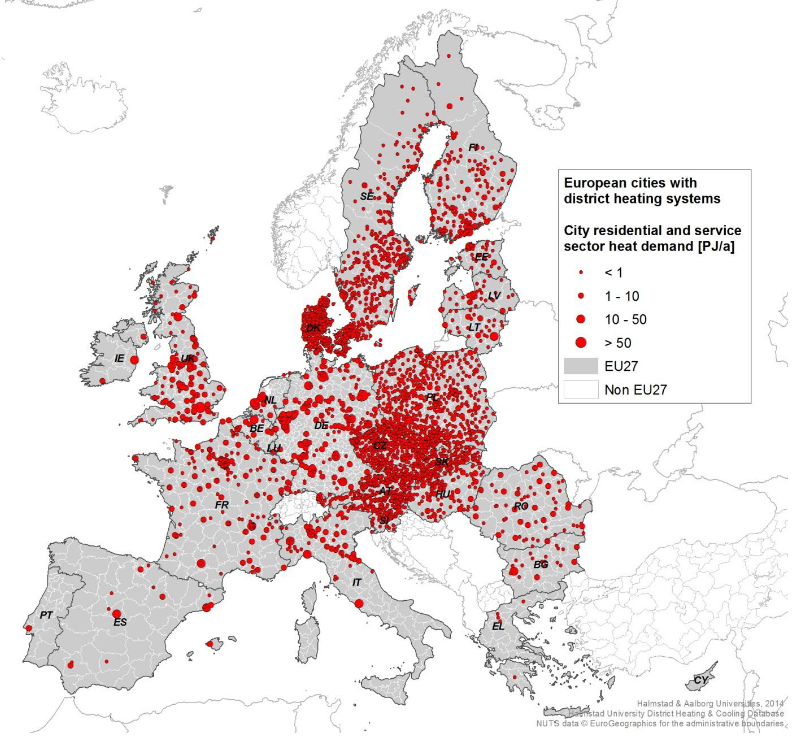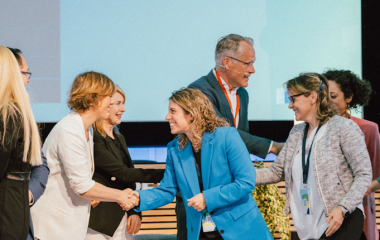
Photo: LDR-reactor
Finnish company Steady Energy plans to build the world’s first district heating plant utilizing small modular reactor (SMR) technology. It is developing the LDR-50 system of 50 MW. The startup has raised EUR 2 million in seed financing for a project which it expects would become operational by 2030.
Steady Energy aims to build a district heating plant running on a small nuclear reactor, the LDR-50, by 2030. It said it would be designed to produce heat efficiently, safely and carbon-free at significantly lower temperatures and pressures than traditional nuclear reactors.
The reactor will be designed to produce heat efficiently, safely and without emissions
The company has raised EUR 2 million for the initial financing of the district heating project utilizing a small modular reactor (SMR) with a thermal capacity of 50 MW.
Steady Energy plans to utilize the funds for research and development and a demonstrator facility.
Pressure in the reactor, similar to an espresso machine
The pressure required by the LDR-50 reactor can be compared to a household espresso machine, according to the company. It will be lower than in the district heating network, ensuring that in the event of a malfunction or leakage, the leak remains contained within the power plant without endangering people or the environment, the engineers claimed.
The nuclear reactor would operate at a lower pressure than the district heating network
The model is under development since 2020 at the VTT Technical Research Centre of Finland. Steady Energy emerged as a spin-off.
The reactor is designed to operate at around 150 degrees Celsius and below 10 bars. Such conditions are less demanding than for traditional reactors, simplifying the technical solutions required to meet the high safety standards of the nuclear industry, the Finnish company said.
Established technology and simplified solutions
The solution for passive heat removal integrated into the LDR-50 reactor plays a crucial role in its safety, the firm pointed out. The LDR-50 is based on light water reactor (LWR) technology, widely used commercially for over fifty years in more than 30 countries worldwide, the startup announced.
When heat removal through the primary heat exchangers is compromised, the water in the intermediate space between vessels begins to boil, creating a passive heat transfer route into the reactor pool. The system does not rely on electrical power or any mechanical moving parts that could fail and hinder the cooling function, the Finnish researchers explained.
The LDR-50 would be about the size of a bus. A single fuel load is set to last two years and the reactor is envisaged to have a 60-year lifespan. The company patented the technology for the proposed reactor in 2021.
Nuclear energy is highly suitable for centralized of thermal energy production, with low emissions throughout its lifecycle and an extremely high energy density of uranium fuel, according to the company. The LDR-50 is designed to be compatible with Finland’s solution for permanent disposal of nuclear waste, it added.
Commercial reactor models for decarbonizing district heating systems
Steady Energy plans to adapt commercial models to the users’ needs, the press release reads.
The company is working on a prototype intended for district heating needs in Finland, but the long-term plan is to install facilities worldwide including for various industrial applications, Chief Executive Officer Tommi Nyman revealed.
The heating plant could even be used as a desalination facility for freshwater production or modified to generate steam for industrial purposes, the company said.
The capacity of the planned prototype would be sufficient to heat a small city
The unit size is sufficient for heating a small city, according to Steady Energy, which stressed that a heating plant can have multiple integrated reactors.
Approximately 50% of the total energy consumed by households in the European Union is used for heating. There are around 3,500 district heating systems supplying 60 million people, with the majority relying on fossil fuels. The annual consumption in the EU amounts to around 500 TWh, of which about 300 TWh is from fossil fuels, Steady Energy underscored.
SMR projects to participate in nuclear capacity expansion planned until 2050
The Intergovernmental Panel on Climate Change (IPCC) said that in order to limit global warming to 1.5 degrees Celsius, nuclear capacities need to triple from the 2020 level to 1.16 TWh by mid-century.
The IPCC has calculated that nuclear capacities need to be tripled by 2050 to achieve climate goals
SMR technology is suitable for electricity generation, cogeneration for heavy industry and district heating, to replace diesel fuel units in mining and industrial production and for water treatment and desalination, according to the Nuclear Energy Agency (NEA), operating within the Organization for Economic Co-operation and Development (OECD).
Such units can be placed on land or water and be stationary or portable. NEA monitors the development of 21 SMR models. LDR-50 is not on the list.


















Be the first one to comment on this article.